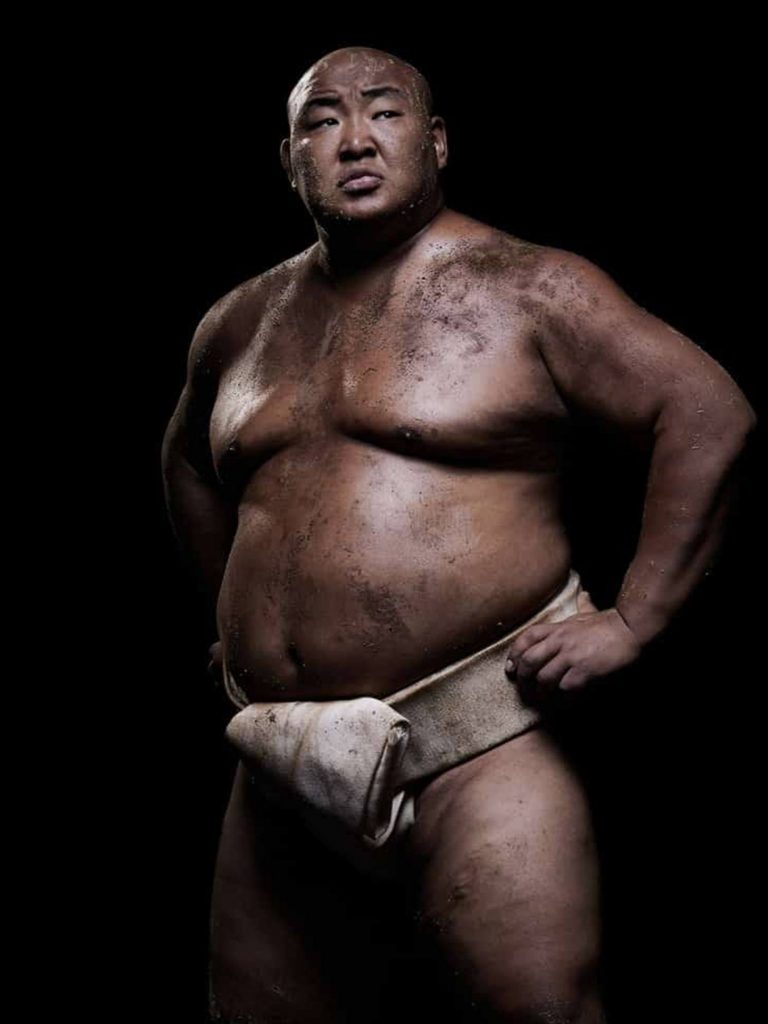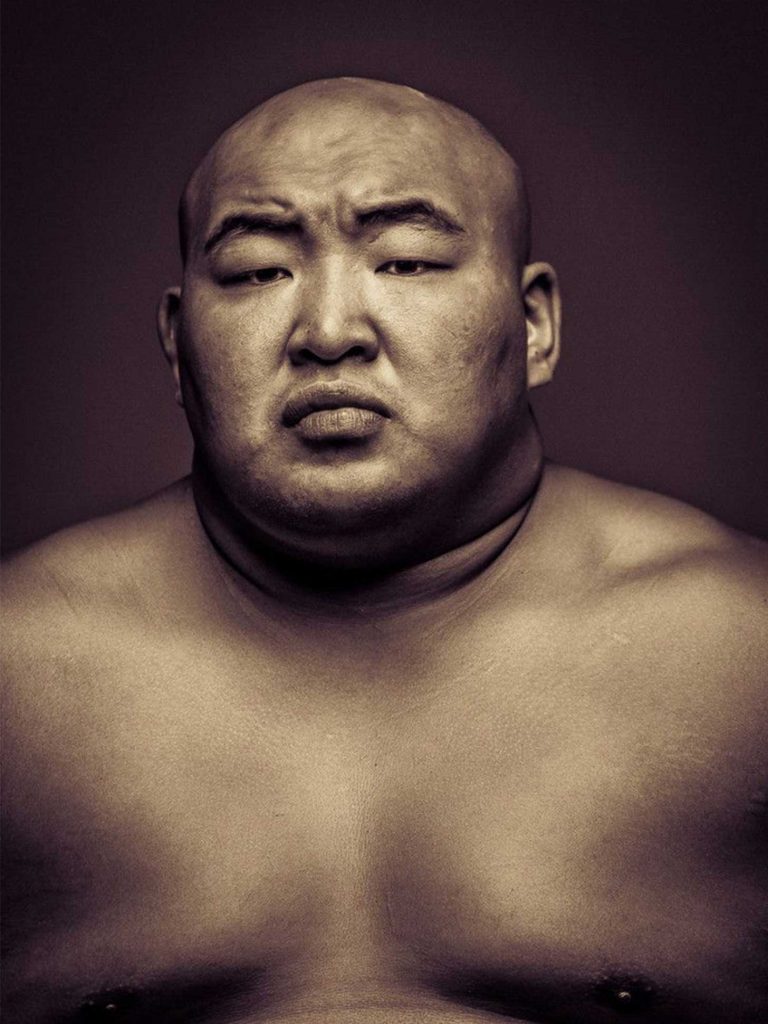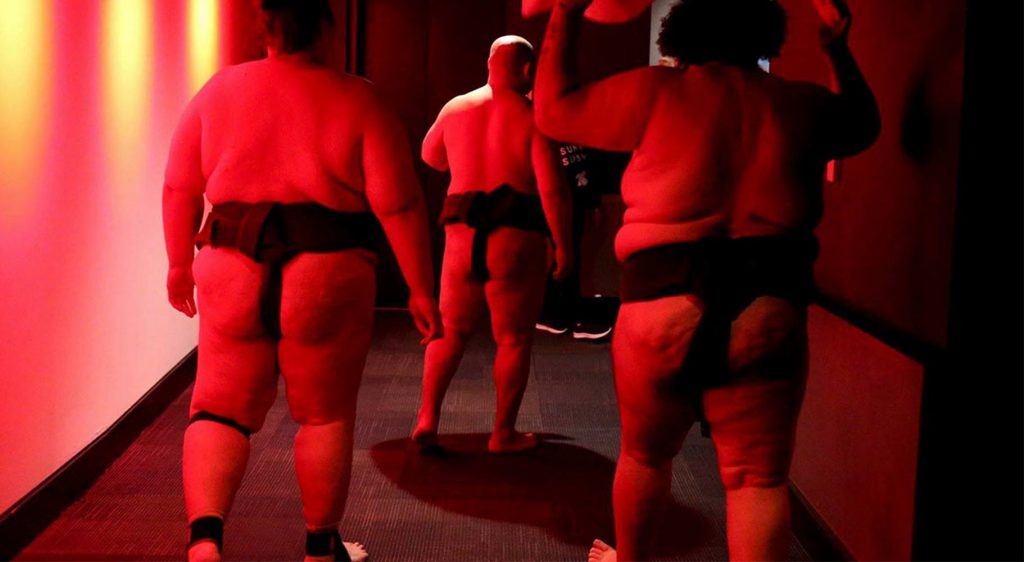
in Style
Lyn Slater
"You know, I always wanted to experiment with being."
At 15, Mongolian wrestler Byamba was handpicked for the rigorous life of professional sumo wrestling in Japan. Following his shock departure from Japan’s exclusive pro sumo leagues five years later, the young fighter went on to become the four time World Champion. Today, the titan of sumo wrestling reflects on his journey to glory and what he lost along the way.


Byambajav “Byamba” Ulambayar was a novice wrestler in Mongolia when he was selected for the regimented training stables of Japan. Having just turned 15, the adolescent was lifted into the cloistered world of Japanese sumo and competed with the country’s most popular fighters. Now at 33, the champion wrestler has harnessed his fame and experience to launch a remarkable career that spans the breadth of the globe. In an exclusive interview with the sumo heavyweight, Byamba is gracious and introspective about his journey to the top. Eager to share his love of the sport, the world champion illuminates the value of experience and the special appeal of this unique sport.
Sumo isn’t just a sport, it’s a lifestyle.
Byamba
Byamba: At that time, I was about 16 and I was living in Mongolia. They held a tryout for young athletes where I lived, so I thought I would go and check it out. Basically, the guy who was holding the tryouts was a Japanese former Grand Champion. He had scouted dozens of young Mongolian top wrestlers and grapplers, and from that tryouts he picked one person, me, to go to Japan and join his team. I guess it was quite by chance. It was something I had never planned or expected. I had no idea whatsoever about Japanese sumo and had no plans to go there. I went to the tryouts because I thought I might get into Mongolian wrestling.I flew straight to Japan and spent 4 – 5 years in pro sumo training. The training is intense. Every day, all day, nearly everyday of the entire year. I think it’s my background in Japan, that kind of intensity and discipline that has helped my practice and my career.
B: Firstly, I should explain that there is pro sumo and international sumo. Japanese pro sumo is incredibly rigorous and traditional, whereas internationally, sumo is practiced as a sport. Japanese pro sumo is only within Japan and a strict hierarchy of competitors get to the top rank of Yokozuna. I left Japan when I was about 20, and some of my contemporaries, other Mongolian nationals, who had joined. They ended up becoming top rank. I can’t say for sure what rank I would have reached in Japan but I think it’s my training that helped me with the world champion titles.
B: Yeah definitely a very tough decision. I’d even call it a mistake. At the time I didn’t think so much about the future I just made a decision based on the situation then. I didn’t have the experience, or think what I was doing. But I had a falling out with my coach, I had injury issues at the time, so I just decided to go. It was a tough decision at the time, but looking back on it, if I hadn’t left, even at this age now I would probably still be in pro sumo. But Japan is very rigid, if I had stayed there I probably would have had much more of a regimented life, but in a way that’s secure and stable. I wouldn’t have the freedom I do now.

B: In Japanese pro sumo there are cultural trappings that have been around for centuries, so joining the pros is a full time, year- round job. You’re never going to be able to transfer or convey everything from that lifestyle and culture when you bring it to different countries. Sumo isn’t just a sport, it’s a lifestyle. It’s almost like a historical, cultural transmission of lots of things from ancient Japan that will otherwise have become lost. So for sumo to develop worldwide, people need to see sumo as a sport.
B: I think when people see sumo for the first time, they’re really amazed by how interesting it is. They have a stereotypical view of it and a misconception that it’s just a couple of big fat guys stumbling through the ring. But really, most people are really impressed and pleasantly amazed by the level of athleticism and dynamism. I see that everytime because people are cheering. They’re so excited. They want to ask questions. Everyone is so fascinated by so many aspects of it. It’s not something they’re familiar with and they didn’t expect it to be that interesting.
“Do your sumo” means win or lose, you’ve got to do what you can and execute it as best as you can.
Byamba
B: Well the most important thing is keiko, sumo practice; practising to the point where the body moves naturally during the match, where I don’t have to think about it. It’s trained to do its job. Mentally it’s more about getting myself concentrating so I can do my own “sumo”. “Do your sumo” is a phrase that is used alot. “Do your sumo” means win or lose, you’ve got to do what you can and execute it as best as you can.
B: When I reflect back over all these years, probably the hardest thing is being far away from my family. There have been a lot of cool projects, but I was hardly able to see my parents during all of these many years. I left Mongolia when I was just 16, and I didn’t go back until I was 20, then I went to the states when I was 21. During all that time, probably the last 18 years, I’ve barely seen my parents. My mum was able to get a visa a couple of times, but my father hasn’t been able to. I couldn’t leave training in Japan to go back to Mongolia, and now with so much travelling, I can hardly get back. So that’s been one of the hardest things.
B: More than winning any of those world championships, and more than winning any titles, when I think back over the last years, the thing I’m proudest of is that I’ve reached so many different people with all my work. I’ve been doing this a long time, longer than anyone else. I’ve actually been travelling the world, doing hundreds of events, being filmed and doing sumo everywhere. So when I think back, that’s probably what I’m proudest of- all the outreach, all the impact I’ve made for sumo. When I talk about the events and being filmed, I don’t mean as an entertainer, a circus act or a joke. It is as a genuine athlete and sumo trainer. I’m showing people things about the culture and educating people through the medium of sumo. In Japan, obviously the top guys are very famous. But they’re not necessarily bringing all of their background and experience to everyone around the world like I’ve been able to by not being in pro Sumo.
At the age of 16, Byambajav “Byamba” Ulambayar was handpicked from his native Mongolia for the training stables of the Japanese Pro League. A few years later, Byamba left the Japanese Pro League after being scouted by USA Sumo to bring sumo to the United States. Following this move, four time World Championship winner Byamba is now arguably the most successful international sumo wrestler. He has appeared in films, appearances and performances worldwide.
Follow Byamba:
Instagram: @sumobyamba

Article from the issue :